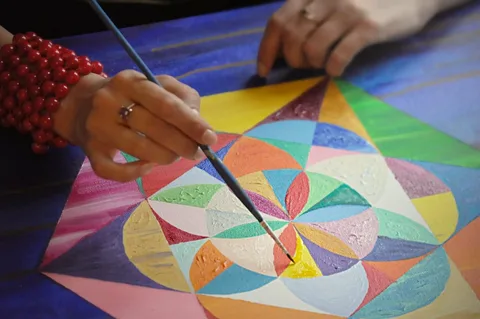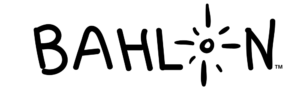Table of Contents
ToggleIntroduction
Art is more than just a form of entertainment or a decorative element adorning the walls of our homes and galleries. For many, it’s a lifeline—a way of translating the complex languages of our minds and hearts. Art therapy harnesses this power, offering a path toward emotional healing through creative expression. If you’ve ever felt the visceral release of scribbling on a page during a moment of frustration, you’ve touched upon the premise of what art therapy can offer. This post aims to delve deep into the transformative potential of art therapy for healing to navigate the often challenging waters of emotional wellness.

The Canvas of Healing
Art therapy for healing is a mental health profession in which clients, facilitated by the art therapist, use art media, the creative process, and the resulting artwork to explore their feelings, reconcile emotional conflicts, foster self-awareness, manage behavior, and addictions, develop social skills, improve reality orientation, reduce anxiety, and increase self-esteem. Within this structured yet liberating framework, individuals who may struggle to articulate their feelings in more traditional therapy sessions are given a voice.
Art therapy has been found to have myriad benefits, from reducing stress and anxiety to assisting with cognitive function and the processing of traumatic experiences. In this piece, we’ll chart the artistic alphabets of emotional healing, highlighting techniques that can be employed, the scientific evidence that underpins art’s healing properties, and real-world examples of its impact.
The Power of Artistic Expression
Freedom on the Canvas
Artistic expression can break down the barriers of language and social convention, offering a realm where our truest selves can emerge. For trauma survivors or those battling mental health conditions, finding a channel for authentic expression is a profound step toward reclaiming a sense of self and autonomy.
Diverse Canvases
Art therapy is not confined to the realm of painting and sketching. It encompasses a breadth of creative mediums—sculpting, photography, and even digital art. Each form offers its unique benefits, catering to the diverse needs and inclinations of individuals.
Understanding Emotions through Art
Art-based interventions encourage individuals to create visual representations of their inner landscapes. Through this mirroring process, they can better process and understand the often complex and conflicting emotions that resonate within. Art therapy employs a variety of techniques to guide participants through their emotional journeys. From free-form expression to more structured exercises like guided imagery or emotional ‘mapping’, each method provides a framework for deeper self-reflection.
Techniques of Art Therapy for Healing
In practice, the art therapist deploys an arsenal of techniques designed to facilitate the healing process. Each approach is tailored to the individual’s needs, preferences, and therapeutic goals.
Guided Imagery and Visualization
Guided imagery, a therapeutic technique, can offer a powerful and transformative narrative for clients. It provides them with a safe space within their mind’s eye to contextualize and deeply explore their emotions. This method acts as a precursor to art-making, effectively preparing participants to embark on their creative journey with intention, focus, and a heightened sense of self-awareness. By immersing themselves in this immersive experience, individuals can tap into their innermost thoughts and feelings, facilitating personal growth and self-expression.
Mandala Creation and Coloring
The act of creating and coloring mandalas, intricate and mesmerizing geometric patterns that symbolize the vastness and unity of the cosmos in various spiritual traditions, can serve as a profound and transformative meditative practice. By immersing oneself in rhythmic strokes and intricate designs, individuals can enter a state of deep concentration and mindfulness, allowing them to achieve a heightened sense of calm, introspection, and inner peace. This practice not only offers solace and respite from the chaos of everyday life but also fosters a sense of order and harmony, as the symmetrical patterns and vibrant colors come together to create a visual representation of balance and unity.
Collage Making
Collage-making is a highly versatile and creative technique that allows participants to curate a meaningful collection of diverse images and materials. By carefully selecting and assembling these elements, a unified piece is created that transcends the boundaries of traditional art forms. This method not only serves as a visual expression but also acts as a powerful tool for the synthesis of fragmented feelings and experiences, fostering emotional integration on a profound level. Through the art of collage-making, individuals can explore and navigate their inner worlds, constructing a narrative that reflects their unique journey of self-discovery and personal growth.
Painting and Drawing
The classic tools of the artist’s trade, such as paintbrushes, canvases, and pencils, are not only essential for creating beautiful artwork but also serve as indispensable staples in the art therapist’s toolkit. Through simple yet powerful painting and drawing exercises, individuals can delve into the depths of their psyche, uncovering hidden emotions and experiences that may have been suppressed or overlooked. These creative expressions act as a profound springboard for open dialogue and self-awareness, enabling individuals to gain a deeper understanding of themselves and their inner world.

Science behind Art Therapy for Healing
Art therapy for healing has not just been relegated to the emotional and subjective realms; studies have begun to unravel the neurobiological underpinnings of its efficacy. Engaging in the creative process can promote neuroplasticity, the brain’s ability to reorganize itself by forming new neural connections.
The Palette of Neurotransmitters
The act of artistic creation triggers the release of dopamine, the “feel-good” neurotransmitter associated with reward and pleasure. It also stimulates the production of endorphins, which can have an anxiolytic effect, reducing sensations of pain and stress.
Getting Started with Art Therapy
You don’t need to be in a formal therapy session to begin reaping the benefits of art as therapy. Simple activities like doodling, coloring, or knitting can serve as meditative practices that calm the mind and open a space for reflection.
Tools of the Trade
For those looking to delve deeper into art therapy, a variety of resources and tools exist to support the journey. Art therapy workbooks, online communities, and local workshops can provide both structure and community for individuals seeking to harness the power of the creative process.
FAQs
What is art therapy for healing?
Art therapy for healing is a form of psychotherapy that uses art media as its primary mode of communication. It is based on the belief that creative expression can foster healing and mental well-being.
Who can benefit from art therapy?
Individuals of all ages, including children, adolescents, adults, and the elderly, can benefit from art therapy. It is particularly beneficial for those experiencing emotional or psychological challenges, but anyone looking to explore their creativity for personal growth can participate.
How does art therapy help with mental health?
Art therapy can help individuals express emotions that may be difficult to verbalize, reduce stress and anxiety, improve self-esteem, and offer a different perspective on problems.
Conclusion
The path of emotional healing through art is deeply personal and often non-linear. By picking up a brush, molding a shape, or engaging with any other creative medium, individuals can begin to trace the contours of their innermost emotions and, in doing so, can find a canvas for growth and transformation. Art therapy beckons us to express ourselves authentically, embrace the journey of self-discovery, and invite healing through the beauty of creation.
Whether you are an experienced artist or are picking up a creative endeavor for the first time, the palette of art therapy is rich and waiting for you to add your unique hues. It is an invitation to pause, reflect, and let the colors of your emotions spill onto the canvas in a dance of healing and renewal.





















2 Comments
I just could not depart your web site prior to suggesting that I really loved the usual info an individual supply in your visitors Is gonna be back regularly to check up on new posts
Great information shared.. really enjoyed reading this post thank you author for sharing this post .. appreciated